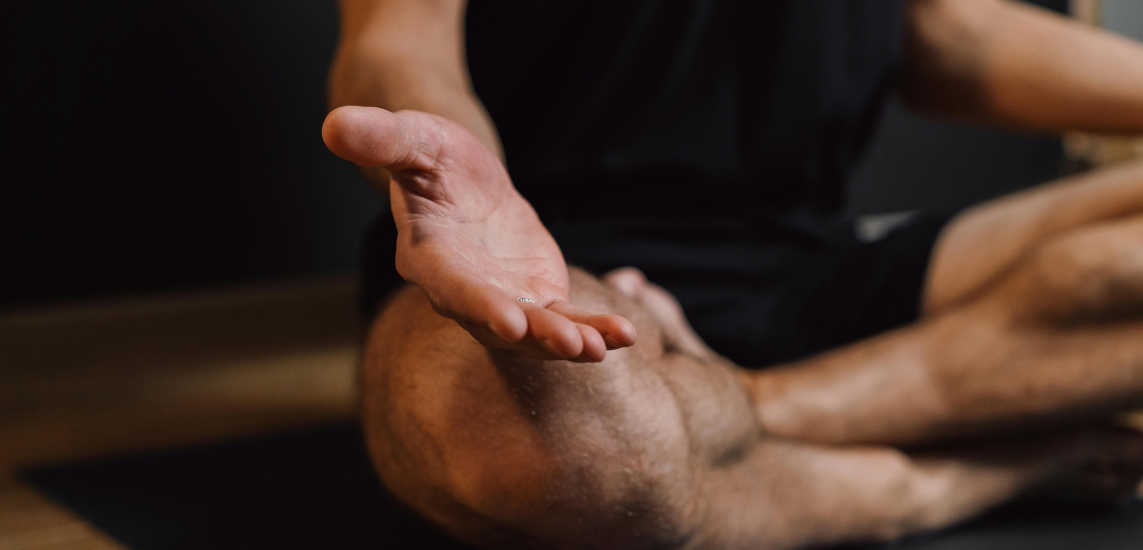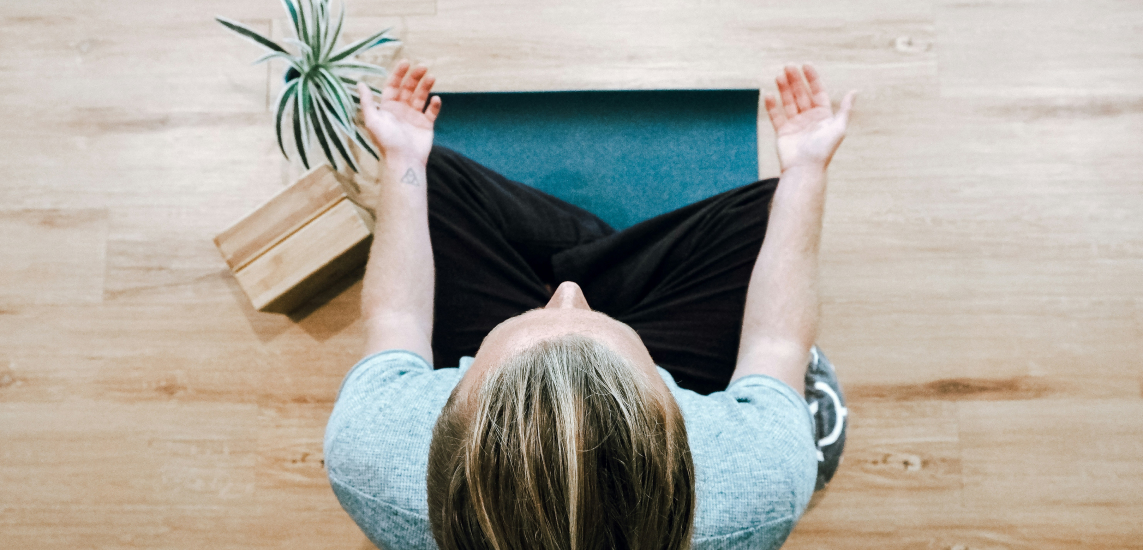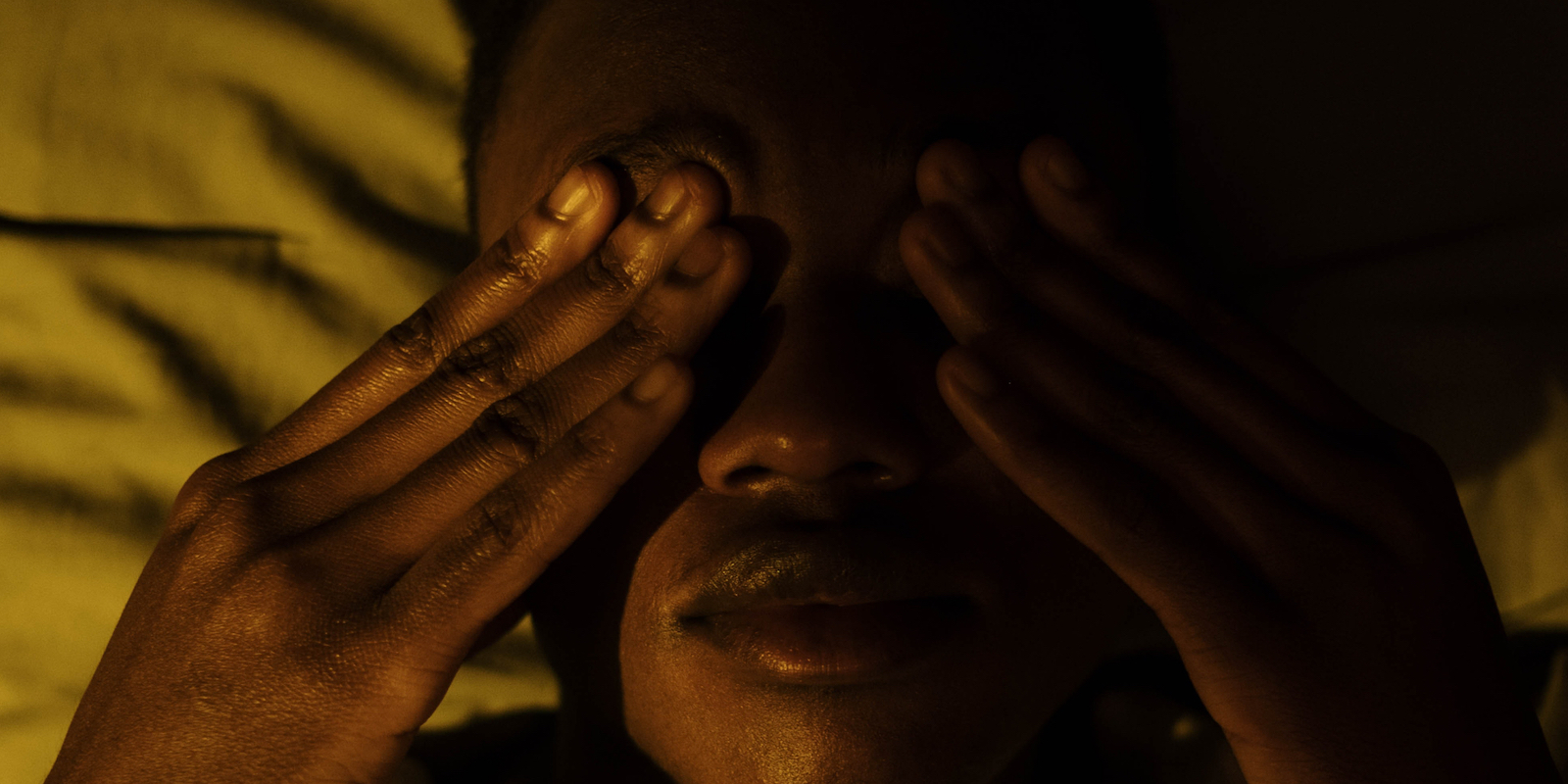To understand how breathing techniques for anxiety help we need to take a look at the most commons symptoms and the anxiety spiral. Explore a collection of helpful guided breathing exercises to ease anxiety, too.
What Is Anxiety?
Anxiety is defined by the American Psychological Association as
“an emotion characterized by feelings of tension, worried thoughts and physical changes like increased blood pressure”.
Often these thoughts stem from an inability to focus on the present moment. When we dwell on things we should or shouldn’t have said, or dread about the hectic days upcoming at work, we find ourselves captive to our thoughts, unable to live in the present.
What spurs on anxiety is complex and multi-layered. However, it’s something that many people suffer chronically from. In the US alone, 40 million people suffer from an anxiety disorder. It’s therefore important to understand what anxiety is, and how we can stop it.
Some of the symptoms of anxiety include:
- Rapid and shallow breathing
- The mind racing with worries
- Feeling an increase in heart rate
- Having difficulty concentrating and experiencing brain fog
- Feeling weak or tired
Essentially, these symptoms can activate the sympathetic nervous system—responsible for the “fight or flight” response—spiking cortisol levels, signaling that the body is under stress. While most people experience these symptoms from time to time, persistent activation of this stress response can increase blood pressure, raise the risk of stroke and even induce weight gain. Without knowing what to do, the effects are sometimes hard to shake, which leads us down a rabbit hole of negative thinking.
Read more: Judson Brewer explains the difference between stress and anxiety.
The Anxiety Spiral
As you can see, the effects of anxiety are seated between both the mind and the body, which exist in a close symbiotic relationship with one another. What that means is, symptoms of anxiety in the body can spur on feelings of anxiety in the mind, which then further exacerbates these bodily sensations. This sets up a feedback loop that perpetuates unnerving thoughts and uncomfortable sensations.
The negative spiral often goes something like this: A stray thought pops into the mind about an upcoming deadline, which suddenly makes you feel tense. This tension in the body is recognized by the mind, which triggers another anxiety-inducing thought, “What if I don’t complete my work in time?” Suddenly your breath becomes shallower and less controlled. As a result, your body receives an insufficient amount of oxygen, which is immediately, yet unconsciously, recognized by the mind as a reason to panic. More anxiety-inducing thoughts manifest in the mind due to this panic felt, which further triggers this mind-body chain reaction. Suddenly you feel incredibly anxious, all from just one stray thought!
Read more: Psychotherapist Andrea Wachter describes two scenarios of dealing with morning anxiety. Which one do you choose for yourself?
Disentangling the close relationship between the mind and the body is one of the first steps to overcome this negative feedback loop. In the moment it may not seem like it, but the anxiety spiral can be conquered. It just needs a little time and practice.
Breathing Techniques For Anxiety: Practicing Dirga Pranayama
Pranayama (“control of energy”) is the ancient science of breathing. It has been untouched by the West for thousands of years but has recently weaved its way into modern medicine.
Explore our large free collection of pranayama breathing practices that can pacify the nervous system and calm emotions.
One study demonstrated that the daily practice of pranayama breathing over a six week period can greatly reduce symptoms of anxiety, increases the parasympathetic activity as well as the general well-being. This highlights the age-old proverb: practice makes perfect.
An exemplary practice is Dirgha Pranayama, otherwise known as the “three-part breath”. A beginner’s guide is as follows:
- Rest one hand on the belly while the other rests on the rib cage.
- Begin to breathe deeply, yet naturally, and place the awareness on the breath.
- As you inhale, feel your belly rise and your ribs expand; as you exhale feel your ribs compress and your belly drop.
- Bring your bottom hand to your chest, just below your collarbone. Breathe all the way into this area, and let the chest rise. Then with a deep exhalation, let it go.
- Notice the lift of the belly, the expansion of the ribs and the lift of the chest as you inhale; feel the chest drop and ribs contract as you exhale.
- Drop your hands while remaining focused on the breath, continuing this process.
This is just one of many different pranayama practices, which studies have shown can lead to a reduction in the symptoms of anxiety (and also elevate cognitive abilities).
Carolyn Anne Budgell’s 10-day course “How to navigate your breath in stressful times” teaches how to use the breath to switch off the anxious mind and overcome states of overwhelm and stress. The course explores breathing in a conscious and regulated way, as well as methods for focusing the mind on breath rather than agonizing over the past or striving to control the future
How Do Breathing Exercises Reduce Anxiety?
1. It Is Food For The Body
Breathing techniques are incredibly useful for the moment you notice yourself tumbling into an anxiety spiral. In a flash of panic or terror, utilizing deep and conscious breathing techniques can do two things:
- Deep and controlled breathing, such as the Dirga Pranayama, has shown to increase oxygenation in the body. This provides us with the energy source that we need (prana is aptly named “energy”) in a more dire time of stress. A rich supply of oxygen for our body gives us one less reason to panic when we find ourselves in the throes of anxious thoughts, resulting in a calmer mind.
- The knock-on effects of the practice can help fight other physiological aspects of anxiety. Deep breathing can reduce and stabilize your heart rate, and enriching the body with more oxygen can decrease blood pressure. By exerting conscious control over the breath, an increase in oxygenation means you are able to interrupt the negative feedback loop, ending the perpetual nature of an anxiety spiral.
Breathing techniques for anxiety can provide much-needed relief in the moment, working wonders for the body and the mind.
But what can integration of these techniques into your daily life do to alleviate anxiety in the long run?
2. Anchoring The Mind
As we’ve explored before, anxious thoughts are often characterized by worrying over the past or dreading the future. It’s rare to possess such anxious thoughts about the present. So the secret to combatting anxiety effectively lies in this —we need to steer our minds to the here and now.
Not only do breathing exercises work physiological wonders, they also serve to center the mind. The exercises present the breath as a much-needed point of focus, which is another way that they can help fight anxiety.
Providing your mind with this focus point that doesn’t rest in the potentially fictitious future or the unimportant and unchangeable past, allows you to be grounded and not tumble further down the spiral of anxious thoughts. Feeling calm in the mind, and firmly rooted in the present, provides autonomy in times when we need it most.
Read more: Explore the powerful 54321 grounding technique that helps to stay present when you feel overwhelmed or anxious.
Now that you know who breathing techniques can break through the anxiety spiral you might want to practice with on of these popular guided meditations:
- Three Part Breath Katia Tallarico 10:00
- Belly Breathing For Anxiety Mary Maddux 12:03
- Anxiety Release: Breath Is Our Home Elliott Treves 29:52
- Dirgha Pranayama - Breathing Practice Cindy Yaple 17:55
- Breathing Through Anxiety Laura Hugill 14:31
- Belly Breath For Relieving Stress & Anxiety Ellie Grace 20:16
- Breathwork For Healing Your Anxiety Samantha Skelly 25:58
- Short Guided Meditation on the Breath Marije E. Paternotte 6:04
Consistency Is Key
Whichever breathing technique you use, develop a daily practice. Over time your preferred exercise can deepen, alleviating symptoms of anxiety, and bringing with it clarity and peace, as you find yourself anchored in the present moment.
Explore various breathing techniques for anxiety in the 10-day course “Pranayama For Restoring Vitality” by Larissa Hall Carlson. You will learn breath-work that allows you to gain control over fluctuating energy, helping to restore balance, harmony, and radiance.




-1.jpg)


